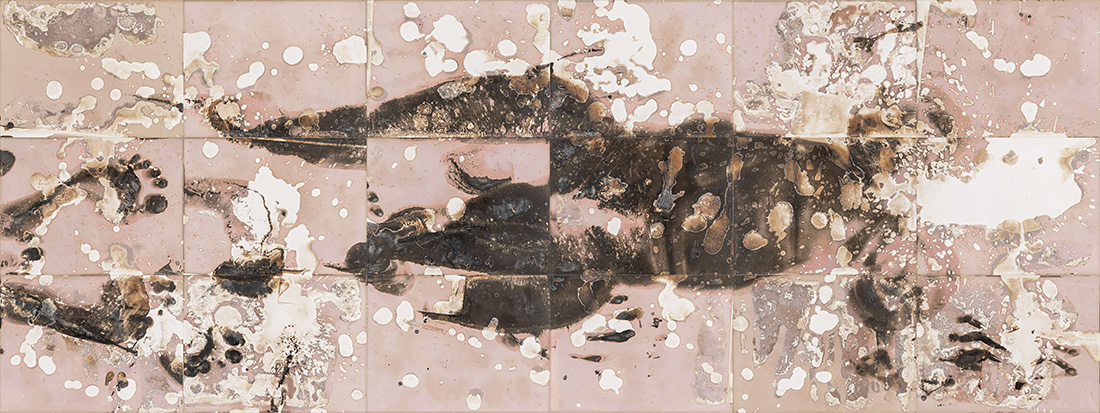
Diana Agunbiade-Kolawole, Honest Portrait #2/2017, 2017. © Diana Agunbiade-Kolawole/Bildupphovsrätt 2025
Honest Portrait #2/2017. From the series Honest Portraits, 2017
Diana Agunbiade-Kolawole
Photographic Conservator Krista Lough reflects on a work that changes and ages like the human body. How is it preserved over time?
Runtime: 03:03
Krista Lough: My name is Krista Lough, and I’m a conservator of photographic materials here at Moderna Museet. One of my primary responsibilities is to ensure the long-term preservation of the photographs in the collection. This takes many forms, but when a photograph is on view, a main concern of mine is light exposure. All photographs are sensitive to light to varying degrees, and exposure to light can cause permanent and irreversible damage.
Gelatin silver photographic papers, like the ones used in Diana Agunbiade-Kolawole’s work, contain light-sensitive silver halides within the top layer of the paper. Prior to processing a photograph, these papers are kept in a lightproof bag and only handled under a red safety light. Traditionally, these papers undergo a series of chemical baths to fix an image on the paper. Working in a darkroom, the sensitized paper is first exposed to light, then placed in a developing solution, followed by a stop bath, then fixer, and finally the paper is washed to remove any remaining chemicals. When the process is complete the gelatin silver photograph is quite light stable and will exhibit minimal changes for many years to come.
In this Honest Portrait, Diana splashed fixer on the surface of the papers, which would react with the silver halides, reducing or halting their sensitivity. With developer on her body, she then lays on the paper, which would amplify the creation of silver clusters. She does not fully fix or wash her prints. This means that the light sensitive silver halides and the processing chemicals are all still within the paper. As a result, the papers would experience a rapid change after contact with the chemicals and will continue to change when exposed to light, but this is intentional.
After speaking with the artist, it became clear that the transition of the work is one of the most important aspects of the piece, and the work is always in transition. Diana spoke of how the work mimics a human or a body and ages. The end of the life of the work is when the materiality disappears, and the piece disintegrates. Understanding Diana’s intent shifts my concerns and how I care for this piece. My main goal is now to document the transition of the piece when it is on view, recording its shifting colors, and minimize the changes when the piece is in storage, though stable environmental conditions and preservation housing. Typically, I would be alarmed by a photograph experiencing visual changes when on view, however with this work, I must step back and allow the piece to transition as the artist intends.